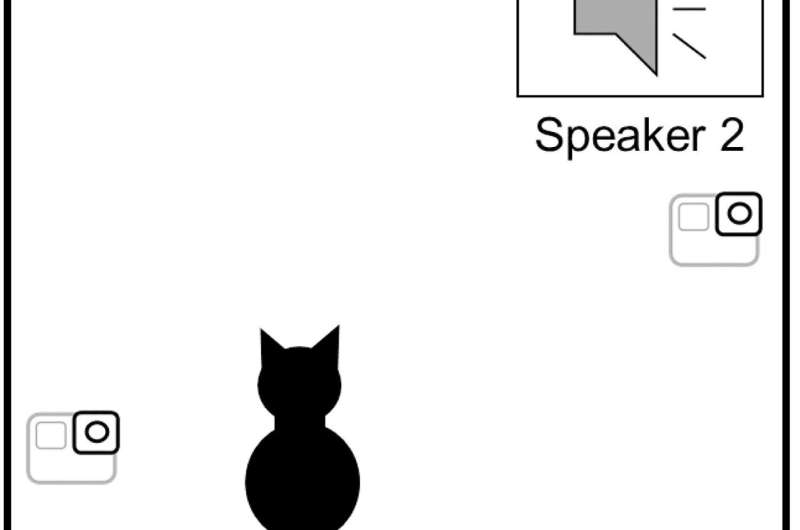Cats found to track owner's movements even when they cannot see them

A team of researchers affiliated with several institutions in Japan, has found that cats keep track of where people are in their homes even when they cannot see them. In their paper published in PLOS ONE, the group describes experiments they conducted with cats and recordings of voices and what they learned from them.
Anecdotal evidence has suggested that cats are generally ambivalent to the activities that go on around them when living with humans. Exceptions tend to occur around feeding time. In this new effort, the researchers had a hunch that cats are more interested in their human caretakers than has been assumed. To find out if that might be the case, they carried out a series of experiments that involved placing cats in enclosures fitted with speakers, piping in sounds and observing the cats' reaction.
The experiments enlisting the assistance of 50 domestic cats (and their owners), who were separated into three random groups. Each of the three groups was then further divided into house cats and café cats. Each of the cats was placed inside a room-sized enclosure fitted with a speaker. Another speaker was placed outside the enclosure. The groups of cats were then exposed to different sounds from the speakers—some were the owners' voices calling them by name; others were stranger's voices calling their name; some were random noise.
Next, the researchers played sound in pairs, the first of which was sent to the speaker inside the enclosure; the second was sent to the speaker outside the enclosure. As the sounds were played, the researchers had volunteer observers rate the degree of surprise exhibited by each cat.
In looking at their data, the researchers found that the cats appeared to express surprise when hearing the voice of their owner first inside the enclosure than suddenly outside of it—an event that suggested the human had suddenly teleported instantly from one location to another. That the cats appeared surprised suggested that they were keeping track of where the human was supposed to be by building a mental map of their surroundings, which included the humans that lived with them.Almost a quarter of a million unowned cats estimated in UK urban areas
More information: Saho Takagi et al, Socio-spatial cognition in cats: Mentally mapping owner's location from voice, PLOS ONE (2021). DOI: 10.1371/journal.pone.0257611
Journal information: PLoS ONE
© 2021 Science X Network
No comments:
Post a Comment